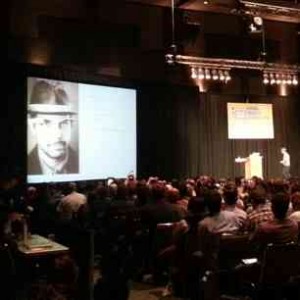#SXSW A Peek At Our World In 3 – 5 Years
Manolo Almagro, Q Division Managing Partner
I just spent the last three days attending #SXSW (south by southwest) interactive festival in Austin TX. For those of you who aren’t familiar to SXSW – its an annual music and interactive technology festival that started in the late 80’s and has gotten bigger and bigger each year since. Companies like Twitter or Foursquare are some of the more famous (and successful) startups that have been launched at SXSW.
Unlike CES, Infocomm or even DSE, this conference is where people go to learn about the interactive technologies that will impact our future – the very close in future, about 3-5 years out.It’s a conference that helps software developers, agencies, brands, and venture capitalists plan for the disruptive technologies that are being developed now and will most likely have a profound impact on human behavior.
The changes are coming fast, and our industry must evolve and adapt if in fact we are going to remain a relevant messaging channel.
Here are some of my take aways from the conference.
- By 2018, marketers will be overlaying brand messages into every form of content and entertainment media. Consumers + Shoppers will spend much less time seeking out content, but rather they will expect relevant content to follow them. Expectations for extreme personalization combined with sophisticated content filtering will empower people with the ability to “dial up or dial down” the kind and amount of marketing messages they want – at will.
- To adapt to the constantly changing behavior of shoppers + consumers, marketers will strive to create more “naturally” occurring types of digital experiences that will promote discovery through convenience and utility. Real-time predictive behavior algorithms will constantly be listening and “aware” of a target’s ambient location data, social media activities and on-line conversations –to provide a continuous stream of content recommendations for any activity.
- Wearable connected technology; smart watches, bio feedback sensors and augmented reality glasses will be more affordable, more functional and more mainstream thanks to advances in cloud computing and the integration of voice and image recognition software. These devices will either link up with the wearer’s primary mobile device or connect directly to the internet. The “natural user interface” will make it very easy for anyone to use the technology in either passive or active ways. People will want to be able to integrate their digital experience with real-life, in a ‘heads-up’ manner – not having to watch heads down through their mobiles or splitting their attention watching screens.
Note: I had a chance to see the Google Glass technology in-person. Make no mistake – this new tech will create a serious disruption for on-location screen based interaction as it allows people to effortlessly incorporate digital experiences in their real-life without having to download an app, touch a screen or have to give up a significant amount of attention to watch a six second clip on a digital screen.
Although in the current iteration – these ‘AR glasses’ look geeky and are at 1200 USD. We’ve all learned from Apple’s iPhone that tech can evolve over time and people will quickly adopt it as long as there is utility and convenience in the technology. Not to mention that people are generally willing to pay USD 700 for a smartphone today.


Follow DailyDOOH